Themed collection Molecular Engineering in MOFs: Beyond Reticular Chemistry

Introduction to molecular engineering in MOFs: beyond reticular chemistry
Marco Taddei, Ashlee Howarth and Takashi Uemura introduce the Molecular Systems Design & Engineering themed issue on molecular engineering in MOFs: beyond reticular chemistry.

Mol. Syst. Des. Eng., 2023,8, 700-700
https://doi.org/10.1039/D3ME90018E
MOF catalysis meets biochemistry: molecular insights from the hydrolytic activity of MOFs towards biomolecules
The versatility of metal–organic frameworks (MOF) towards hydrolysis of a range of biological molecules is explored in detail to underline specific challenges and exciting possibilities of developing MOFs as nanozymes.

Mol. Syst. Des. Eng., 2023,8, 270-288
https://doi.org/10.1039/D2ME00213B
Reticular chemistry of uranyl phosphonates: synthesis, design, and beyond
The successful design strategy put reticular chemistry in uranyl phosphonate frameworks, which integrate multifunction to corresponding applications.

Mol. Syst. Des. Eng., 2023,8, 146-150
https://doi.org/10.1039/D2ME00217E
Metal–organic framework composites from a mechanochemical process
This review summarizes the unique advantages and opportunities offered by the mechanochemical process to generate MOF composites.

Mol. Syst. Des. Eng., 2023,8, 560-579
https://doi.org/10.1039/D2ME00211F
Metal–organic framework-derived semiconductors for photocatalytic hydrogen production
Metal–organic framework-based semiconductors have shown great promise for the production of a green fuel, hydrogen, using two abundant resources: the sun and water.

Mol. Syst. Des. Eng., 2023,8, 151-166
https://doi.org/10.1039/D2ME00221C
Solvent-free synthesis of a new perfluorinated MIL-53(Al) with a temperature-induced breathing effect
A new fluorinated member of the MIL-53(Al) family, displaying a unique temperature-induced phase transition, was synthesised via a solvent-free route.

Mol. Syst. Des. Eng., 2023,8, 586-590
https://doi.org/10.1039/D2ME00280A
Bayesian optimization of the composition of the lanthanide metal–organic framework MIL-103 for white-light emission
To realize lanthanide metal–organic frameworks (Ln-MOFs) with white light emission, it is necessary to adjust their RGB composition. We adopted the Bayesian optimization technique to optimize the stoichiometric ratio of metal-salts in Ln-MOFs.
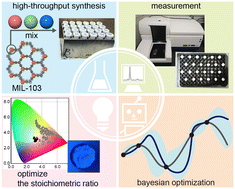
Mol. Syst. Des. Eng., 2023,8, 431-435
https://doi.org/10.1039/D2ME00277A
A luminescent cationic MOF and its polymer composite membrane elicit selective sensing of antibiotics and pesticides in water
Medicines and pesticides are being used excessively, misused, or abused in recent times, resulting in major environmental contamination and, more specifically, water pollution.
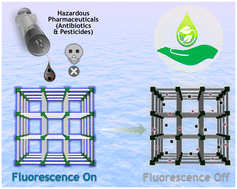
Mol. Syst. Des. Eng., 2023,8, 1483-1491
https://doi.org/10.1039/D3ME00008G
Reducing defect density in UiO-68–CHO is key for its efficient and reliable post-synthetic modification
‘Healed’ UiO-68–CHO with reduced missing linker defect density is a perfect platform for PSM, giving nearly quantitative and highly reproducible yields.
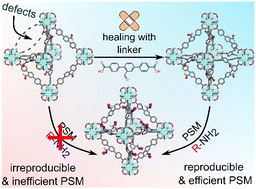
Mol. Syst. Des. Eng., 2023,8, 1381-1387
https://doi.org/10.1039/D3ME00071K
Metal–organic framework clustering through the lens of transfer learning
Transfer learning performance across the textural space of metal–organic frameworks depends on the distance in principal component space.

Mol. Syst. Des. Eng., 2023,8, 1049-1059
https://doi.org/10.1039/D3ME00016H
Impact of the metal centre (Al3+, Fe3+) on the post-synthetic lithiation of functionalized MIL-53s and the electrochemical properties of lithiated derivatives
MIL-53(M)-(OH)2 (M = Al, Fe) solids based on a redox active dioxoterephthalate ligand were lithiated post-synthesis, and the resulting products were evaluated as positive electrode materials for Li-ion batteries.

Mol. Syst. Des. Eng., 2023,8, 1030-1039
https://doi.org/10.1039/D3ME00030C
Exploring the oxygen evolution electrocatalysis of an amine-based cobalt metal–organic framework
The interpenetrating 2D-sheet framework of Co-TMBT-MOF cast onto nickel foam is used as a pre-catalyst to generate an efficient OER catalyst with low overpotential.

Mol. Syst. Des. Eng., 2023,8, 1004-1012
https://doi.org/10.1039/D2ME00259K
Zr-containing UiO-66 metal–organic frameworks as efficient heterogeneous catalysts for glycerol valorization: synthesis of hyacinth and other glyceryl acetal fragrances
Zr-containing UiO-66 compounds are effective and reusable heterogeneous catalysts for glycerol valorization into glyceryl acetal fragrances.
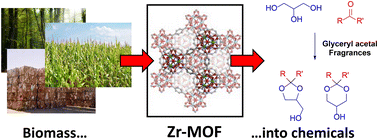
Mol. Syst. Des. Eng., 2023,8, 775-785
https://doi.org/10.1039/D2ME00255H
Post engineering of a chemically stable MOF for selective and sensitive sensing of nitric oxide
A hydrolytically stable luminous metal–organic framework (MOF) sensor was strategically designed for precise dual phase recognition of biologically relevant yet toxic nitric oxide (NO).
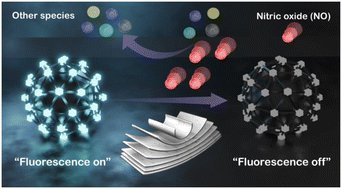
Mol. Syst. Des. Eng., 2023,8, 756-766
https://doi.org/10.1039/D2ME00278G
Molecular understanding of the impacts of structural characteristics on ethanol adsorption performance for adsorption heat pumps
Adsorption heat pumps (AHPs) powered by low-grade waste heat or renewable energy can reduce electricity consumption and carbon emission.

Mol. Syst. Des. Eng., 2023,8, 733-742
https://doi.org/10.1039/D2ME00222A
Nanosilver-loaded metal–organic framework UiO-66 with strong fungicidal activity
Green functionalization of the metal–organic framework UiO-66 with a high loading of dispersed cationic silver species, having an outstanding antifungal action.

Mol. Syst. Des. Eng., 2023,8, 721-732
https://doi.org/10.1039/D2ME00233G
Mixing ligands to enhance gas uptake in polyMOFs
PolyMOFs prepared from mixtures of multivalent polymer linkers and free linkers display tunable surface areas and improved CO2 uptake compared to native MOF-5 and polyMOF-5.
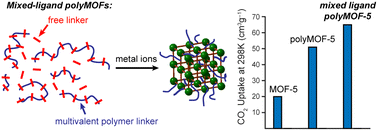
Mol. Syst. Des. Eng., 2023,8, 591-597
https://doi.org/10.1039/D2ME00227B
Efficient and strategical installations of quaternary ammonium groups in metal–organic frameworks for hydroxide conductivity
Positively charged aromatic and aliphatic quaternary ammonium groups were successfully installed in metal–organic frameworks (MOFs) through post-synthetic modification (PSM) and post-synthetic exchange (PSE) for hydroxide conductivity studies.

Mol. Syst. Des. Eng., 2023,8, 598-603
https://doi.org/10.1039/D2ME00238H
Effects of MOF linker rotation and functionalization on methane uptake and diffusion
Neglecting linker rotation in molecular simulations of methane in UiO-66 can have a significant impact on methane diffusion and moderate impact on methane uptake.
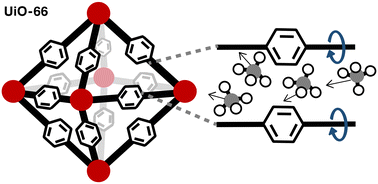
Mol. Syst. Des. Eng., 2023,8, 527-537
https://doi.org/10.1039/D2ME00237J
Terbium-modified two-dimensional zirconium-based metal–organic frameworks for photoluminescence detection of nitrite
Terbium ions were installed on nodes of a two-dimensional Zr-based MOF, and the material was applied for photoluminescence nitrite detection.

Mol. Syst. Des. Eng., 2023,8, 330-340
https://doi.org/10.1039/D2ME00214K
Preferential orientation of anisotropic polythiophene rods toward macroscopic chain ordering
Combining a MOF template with simple rubbing methods achieves macroscopic alignment of unprocessable polymer chains.
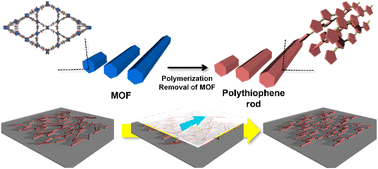
Mol. Syst. Des. Eng., 2023,8, 316-322
https://doi.org/10.1039/D2ME00204C
Computational investigation of multifunctional MOFs for adsorption and membrane-based separation of CF4/CH4, CH4/H2, CH4/N2, and N2/H2 mixtures
The highest adsorption selectivity improvements for CF4/CH4, CH4/H2, CH4/N2, and N2/H2 separations were generally observed in multi-functionalized-MOFs (MTV-MOFs) with –OCH3–OCH3 groups.

Mol. Syst. Des. Eng., 2022,7, 1707-1721
https://doi.org/10.1039/D2ME00130F
Wood modification for the synthesis of MOF@wood composite materials with increased metal–organic framework (MOF) loading
A wood modification with MA and APTES was achieved which enabled an increased MOF loading of MIL-53(Al) and ZIF-8 for a potential application of the MOF@wood composite in continuous filtration and catalysis.

Mol. Syst. Des. Eng., 2022,7, 1682-1696
https://doi.org/10.1039/D2ME00163B
Through-space hopping transport in an iodine-doped perylene-based metal–organic framework
We report the electrical conductivity enhancement of a perylene-based MOF upon partial ligand oxidation. The conductivity enhancement is rationalised by quantum-chemical calculations, supporting a through-space hopping transport.
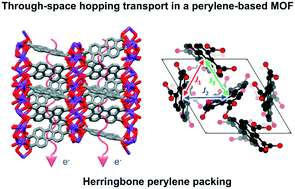
Mol. Syst. Des. Eng., 2022,7, 1065-1072
https://doi.org/10.1039/D2ME00108J
Application of transfer learning to predict diffusion properties in metal–organic frameworks
The knowledge leveraged from adsorption property can be used to induce enhancements in the prediction of diffusion property within metal–organic frameworks.
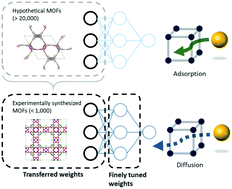
Mol. Syst. Des. Eng., 2022,7, 1056-1064
https://doi.org/10.1039/D2ME00082B
About this collection
This special collection of MSDE, Guest Edited by Marco Taddei (University of Pisa, Italy), Ashlee Howarth (Concordia University, Canada) and Takashi Uemura (University of Tokyo, Japan) showcases the latest molecular engineering advances in metal-organic frameworks (MOFs). Over the last twenty years, the field of MOFs has experienced huge growth. At the core of this expansion is the modular structure of MOFs, which allows for the design of materials with atomic-level precision. Originally dominated by chemists, the field of MOFs has progressively attracted researchers with a diverse background - including materials scientists, chemical engineers and physicists – moving towards new directions and opening itself to approaches inspired by molecular engineering. The goal of this special issue in MSDE is to showcase the diversity of molecular engineering approaches currently applied to MOFs, with a focus on the links between molecular structure, properties and function.